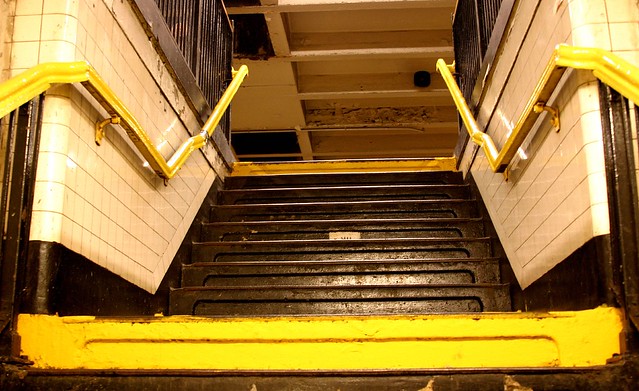Earlier this week, I featured a piece I wrote a few years ago about brining air conditioning to the subway. It was not easy, unsurprisingly, for New York City Transit to usher in something like air conditioning, and the subways were even worse in the summer 30 years ago than they were today. In fact, a 1983 study found that just 50 percent of buses and 33 percent of subway cars were air conditioned. Considering how we respond to un-air conditioned subways today, it’s hard to believe New Yorkers suffered through such brutal summers barely 30 years ago.
In the comments to that post, SAS regular Phantom said something I’ve often thought over the years. “The subways,” he said, “are off the charts better than they were in the past. We forget that sometimes.” As we fight for better transit planning, more political support and sounder financial investments, we certainly do forget that. We forget what it was like to ride around in graffiti-covered cars that were un-air conditioned, poorly lit and prone to breakdowns. We forget what it was like to avoid subway stations over concerns for personal security or only ride during certain hours. We forget how far we’ve come over the last three decades.
Now and the, while researching a post on subway history, I come across glimpses of the subway past. I wasn’t alive when things were really bad in the 1970s and my memory of the 1980s is sparse. By the time I was old enough to ride the subways alone, the system was on the upswing with better rolling stock, safer environments and stations undergoing renovations. I remember the days of rampant graffiti, and I remember all that graffiti vanishing. I pin I have from a late-1980s street fair proclaims a new “Wipe out graffit” campaign, and it was successful.
But while graffiti became a visible symbol of the system’s decay, the state of the subways went well beyond vandalism. Track fires, such as one from September of 1979 that shut down the West Side IRT for three hours, were common occurrences. This one led to the evacuation of thousands of passengers as subway service from Manhattan to the Bronx shut down, and it was hardly an isolated event. From the DeKalb Ave. bottleneck to the Bronx and Queens, the system suffered from minor delays all the time. It was just a fact of travel.
Meanwhile, the rolling stock was in a terrible state. We look back in wonder at a time without air conditioning, but the train sets from the late 1970s and early 1980s were old. Cars broke down regularly; doors wouldn’t open; lights weren’t on. Stainless steel with FIND displays these cars were not.
By the standards of 35 years ago, today’s subway system is downright luxurious. Stations are in much better state; the rolling stock is mostly newer; switches and signals have been upgraded; technology has made its way underground. Today, minor delays as treated as major inconveniences, and four decades ago, those delays would have been just another part of the daily ride. No matter how much better we want subway service to be, it’s hard to deny the progress the city has made since the state began investing more in transit.
So where do we go from here? One of the reasons why I’ve called for more investment is because we can’t relive that era. The subways and buses were losing 5-10 percent of their ridership annually due to the state of the system and the state of the city’s economy. Right now, though, the subways power New York City, and the powers that be must ensure that it can continue to do so for another 110 years. We have to remember the past or else we may be doomed to repeat it. No one wants to relive that subway experience again.















